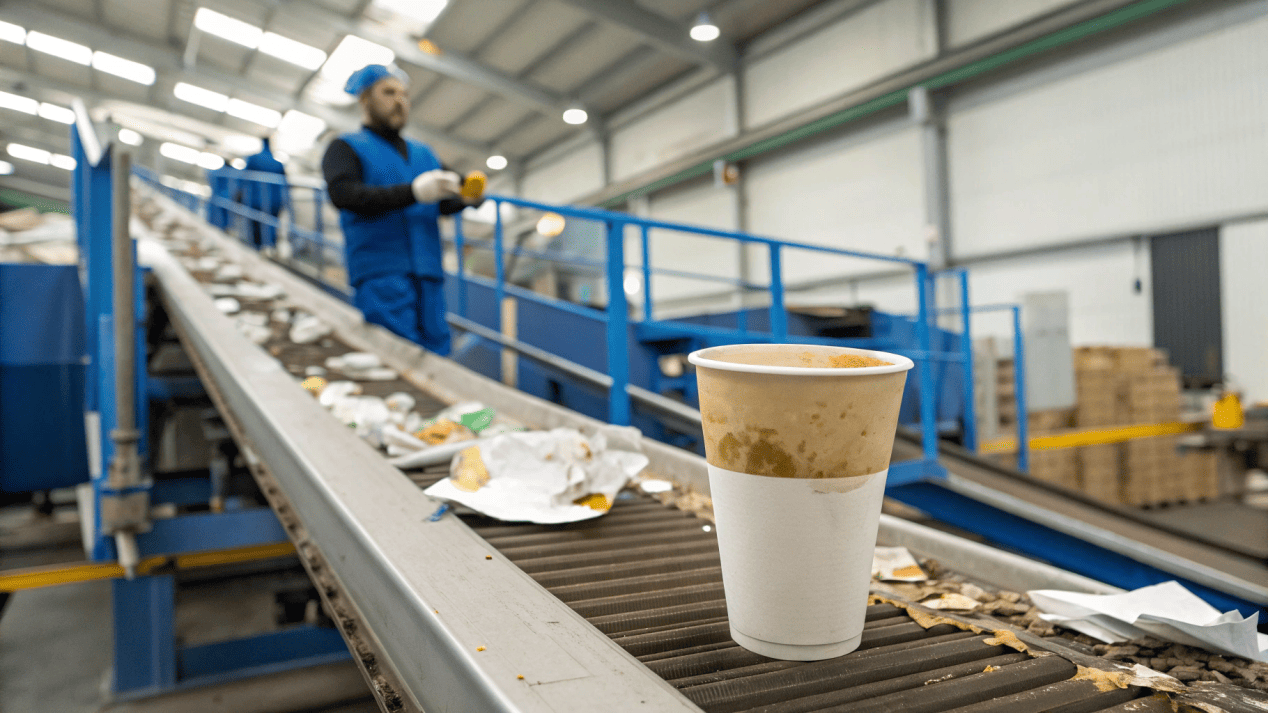You want to make the responsible choice for your business and customers. But the confusing "green" labels on packaging leave you wondering if you're actually helping or just "greenwashing."
A "compostable" certification is the most reliable, but only if you have access to industrial composting. "Recyclable" is a good option if kept clean. "Biodegradable," without a specific certification, is often a misleading marketing term.

As an engineer, I look at sustainability as a system with inputs, processes, and outputs. A label on a cup is just one part of that system. The most important part is the "end-of-life" journey: what actually happens to the cup after it's thrown away? For years, I've seen clients pay more for "eco-friendly" cups that end up in the exact same landfill as regular trash. The labels can be confusing, and sometimes, they are designed to be. Let's break down the science behind each term so you can make an honest choice for your brand and the environment.
What Does 'Compostable' Actually Guarantee?
You see the "compostable" logo on a cup and pay a premium for it, feeling good about your choice. But you secretly worry: does it just end up in a landfill anyway?
Certified compostable guarantees the product will break down into nutrient-rich soil within 180 days in an industrial facility. This is a scientific promise backed by rigorous testing and certifications like BPI.

This is the gold standard for a reason. It's a claim with strict rules. For a product to be certified compostable in the United States, it must meet a standard called ASTM D6400. My engineer brain loves this because it's based on data, not just feelings. The product must pass three tests: it must biodegrade almost completely, disintegrate until you can't see it, and leave no toxic residue behind. This process turns your old cups into a valuable new product: compost for farms and gardens. But here is the critical part: this only happens in a specialized industrial composting facility, not in your backyard or in a landfill. If this cup ends up in a landfill, it fails to complete its mission and can actually release methane, a harmful greenhouse gas.
| Certification | What It Means | Where It's Used |
|---|---|---|
| BPI | Verifies product meets ASTM standards for compostability. | North America |
| CMA | Tests products in real-world composting facilities. | North America |
| TÜV AUSTRIA | Certifies for industrial, home, soil, and marine compostability. | Europe & Global |
Is the 'Biodegradable' Label Just Greenwashing?
You see a product labeled "biodegradable" and assume it will naturally return to the earth. But this sounds too simple. Is it a real environmental benefit or just a marketing trick?
Often, it's a trick. The term "biodegradable" has no legal or scientific definition for timeframe. A product that takes 500 years to break down can still be called biodegradable, making the claim almost meaningless.

This is the term that causes the most confusion, and as a manufacturer, it frustrates me. "Biodegradable" simply means that something can be broken down by microorganisms over time. A log of wood is biodegradable. Your leather shoes are biodegradable. The question is, how much time? Without a specific timeframe and a defined environment, the claim is hollow. It preys on the good intentions of consumers. In many cases, it is a form of "greenwashing"—making a product seem eco-friendly when it isn't. When these products end up in a landfill, they are buried without oxygen. This anaerobic decomposition process causes them to release methane, a greenhouse gas that is far more potent than carbon dioxide. Unless a product has a specific certification (like for "home compostable"), I advise my clients to avoid the generic "biodegradable" claim. It can damage your credibility.
If a Paper Cup Says 'Recyclable,' Does It Actually Get Recycled?
You confidently put a "recyclable" paper cup into the recycling bin. You've done your part, right? But you've heard that most coffee cups actually end up in the trash anyway.
Not always. While the paper fiber itself is valuable, the plastic lining and food contamination are huge problems. Most recycling facilities will reject a food-soiled paper cup, sending it straight to the landfill.

Paper recycling is an excellent system when it works. It saves trees, energy, and water. However, the system is very sensitive to contamination. Think of it like doing laundry: you wouldn't throw a muddy shirt in with your clean white clothes. For paper cups, there are two main contaminants. The first is food residue—leftover coffee, soup, or grease ruins the paper pulp. The second is the plastic lining inside the cup that makes it waterproof. Most cups use a polyethylene (PE) lining, which is difficult for standard paper mills to separate.
This is why many recycling centers simply don't accept paper cups. It's too costly and complicated for them. Don't confuse certifications like FSC (Forest Stewardship Council) with recyclability. FSC ensures the paper came from a sustainably managed forest, which is great! But it says nothing about what happens to the cup after it's used. For recycling to work, the cup must be clean and your local facility must have the technology to process it.
When Recycling Succeeds vs. When It Fails
- Success: A clean, empty cup made with easily separable materials is sent to a specialized facility that accepts paper cups.
- Failure: A half-full cup with a PE liner is tossed in a mixed recycling bin and is sorted out and sent to a landfill.
Conclusion
The "greenest" choice depends entirely on your local infrastructure. Choose the packaging with a clear and viable end-of-life plan in your community, not just a feel-good label.
